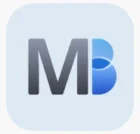Looking to take control of your yearly finances? A Free Printable Annual Budget Planner is the perfect tool to help you map out income, expenses, and savings month-by-month. This planner provides a clear, organized layout to track financial goals, manage debts, and monitor savings all year long. Designed for convenience, our annual budget planner is easy to download, print, and customize to suit your unique financial needs.
Start your journey to financial clarity—download your Free Printable Annual Budget Planner today and take control of your financial future!
Annual Budget Planner
| Month | Income | Expenses | Savings | Debt Payment | Remaining Balance |
|---|---|---|---|---|---|
| January | |||||
| February | |||||
| March | |||||
| April | |||||
| May | |||||
| June | |||||
| July | |||||
| August | |||||
| September | |||||
| October | |||||
| November | |||||
| December | |||||
| Total |
Guide to Using Your Free Printable Annual Budget Planner
Using your Free Printable Annual Budget Planner is simple and effective for organizing your finances over the year. Start by filling in your monthly income, expenses, savings goals, and any debt payments. Review and adjust your entries as the month progresses to keep track of your spending and identify any surpluses or deficits. This process helps you stay on top of financial goals, build savings, and manage debt efficiently.
1. Set Up Your Planner
- Download and print your Free Printable Annual Budget Planner.
- Familiarize yourself with the layout: it typically includes columns for each month’s income, expenses, savings, debt payments, and remaining balance.
2. Input Monthly Income
- Start with Income. List all sources of income, including salary, freelance work, rental income, etc.
- Example: If you earn a salary of $3,500 and have side income of $500, enter $4,000 as your total monthly income.
3. Track Monthly Expenses
- Add up all monthly expenses, such as rent, groceries, utilities, transportation, and entertainment.
- Example: If your rent is $1,200, groceries $300, utilities $150, and other expenses $350, enter the total ($2,000) under Expenses for the month.
4. Record Monthly Savings Goals
- Set a monthly savings goal and record it in the Savings column.
- Example: You aim to save $300 each month, so enter this amount under Savings.
5. Include Debt Payments
- Track any recurring debt payments (credit card, student loans, etc.).
- Example: If you pay $200 monthly toward credit card debt, input this in the Debt Payment section.
6. Calculate Remaining Balance
- The Remaining Balance shows what’s left after all expenses, savings, and debt payments.
- Example: With $4,000 income, $2,000 in expenses, $300 in savings, and $200 in debt, the balance would be $1,500. This balance helps you see any surplus or deficit.
7. Review and Adjust Each Month
- At the end of each month, compare your budgeted amounts to actual spending. Adjust as needed for upcoming months.
- Look at trends over several months to make more informed financial decisions and improve budgeting accuracy.
Using a Free Printable Annual Budget Planner in this way provides clarity on spending patterns, ensures you’re working toward financial goals, and helps build a solid foundation for the future. Get started with your planner today and achieve financial control!
Frequently Asked Questions: Free Printable Annual Budget Planner
1. What is a Free Printable Annual Budget Planner?
A Free Printable Annual Budget Planner is a downloadable and customizable tool designed to help track income, expenses, savings, and debt payments month-by-month throughout the year. It provides a structured layout to manage your finances easily.
2. How do I download and print the planner?
Most planners can be downloaded directly from websites offering them as PDF files. Simply click the download link, save the file, and print it from your home or office printer.
3. Can I customize the budget categories?
Yes, although categories like Income, Expenses, Savings, and Debt Payments are standard, you can add notes or additional sections for specific goals or categories on printed sheets.
4. How should I fill in the planner?
Fill in your estimated monthly income, expenses, savings goals, and debt payments at the start of each month. Update these figures regularly to reflect actual numbers as the month progresses.
5. Why is tracking monthly balances important?
Tracking monthly balances helps you see if you’re meeting financial goals, maintaining savings, and managing expenses. This information allows you to make informed adjustments as needed.
6. Can I use it for both personal and household budgets?
Absolutely. This planner is versatile, making it suitable for tracking personal budgets, household expenses, or even small business expenses if needed.
7. How can I use it to improve my financial habits?
By regularly updating your planner, you can identify spending patterns, set realistic savings goals, and reduce unnecessary expenses. Over time, this helps develop disciplined budgeting habits.
8. Should I track debt payments separately from other expenses?
Yes, recording debt payments separately provides a clearer picture of total expenses, helping you monitor how much income goes towards reducing debt versus other costs.
9. How does the “Remaining Balance” work?
The Remaining Balance is calculated by subtracting total expenses, savings, and debt payments from monthly income. This shows what you have left, or any shortfall, at month’s end.
10. What should I do if I have a surplus or deficit?
If you have a surplus, consider increasing savings or paying down debt. For a deficit, review where you can cut back on non-essential expenses to avoid overspending.
